Six photos, six species.
Occasionally I post a small collection of recent photos that didn’t quite make the grade for a standalone post but still hold some interest for one reason or another. Each of the following photos was taken within the last three weeks.
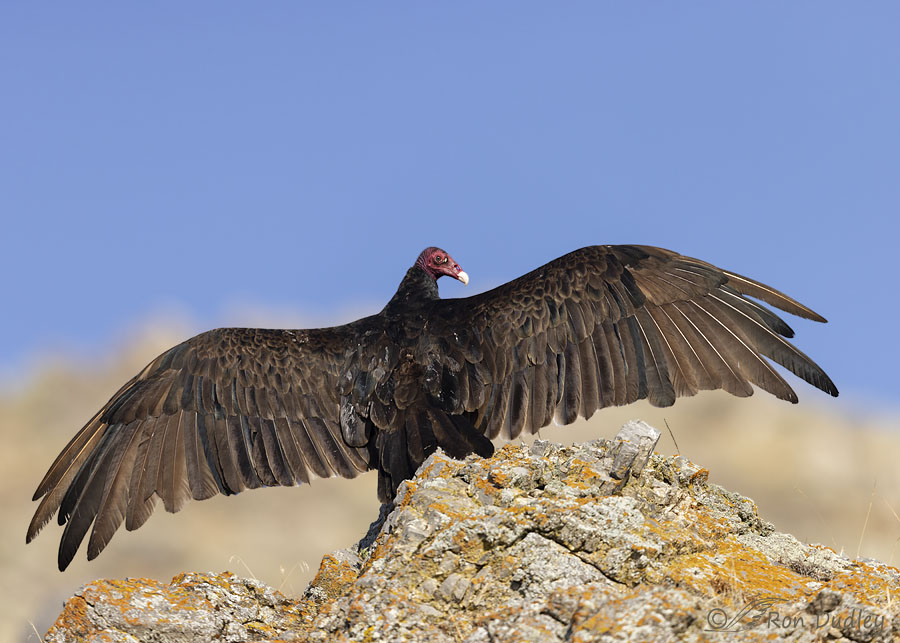
A Turkey Vulture in the classic spread-wing posture of the species. The bird was actually tipped like this so I didn’t rotate to make it level when it wasn’t.
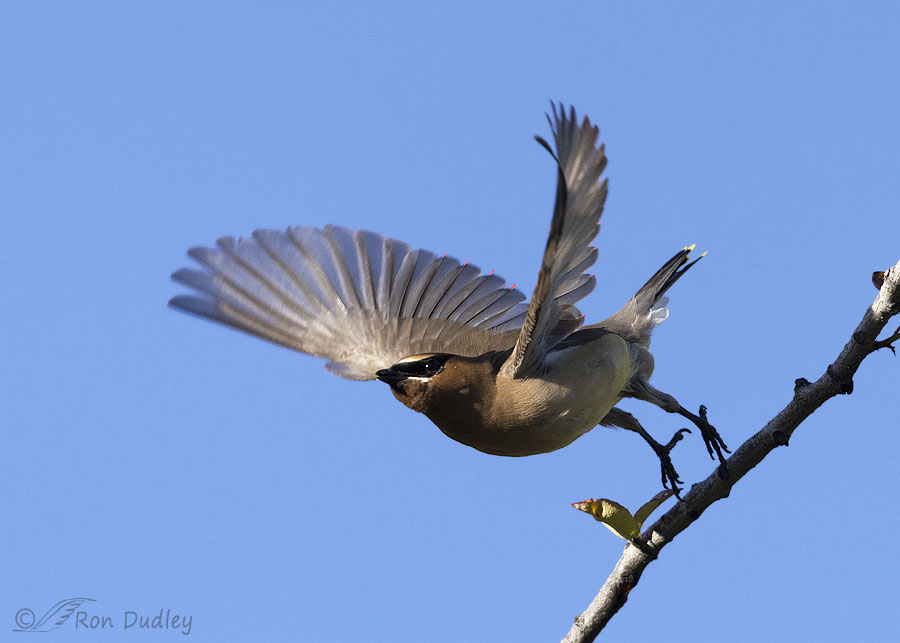
A Cedar Waxwing taking off in funky light. This shot has some issues but I like the look it allows us of the red, waxlike “droplets” on the tips of the secondaries. I don’t often see those red tips when the wings are open.
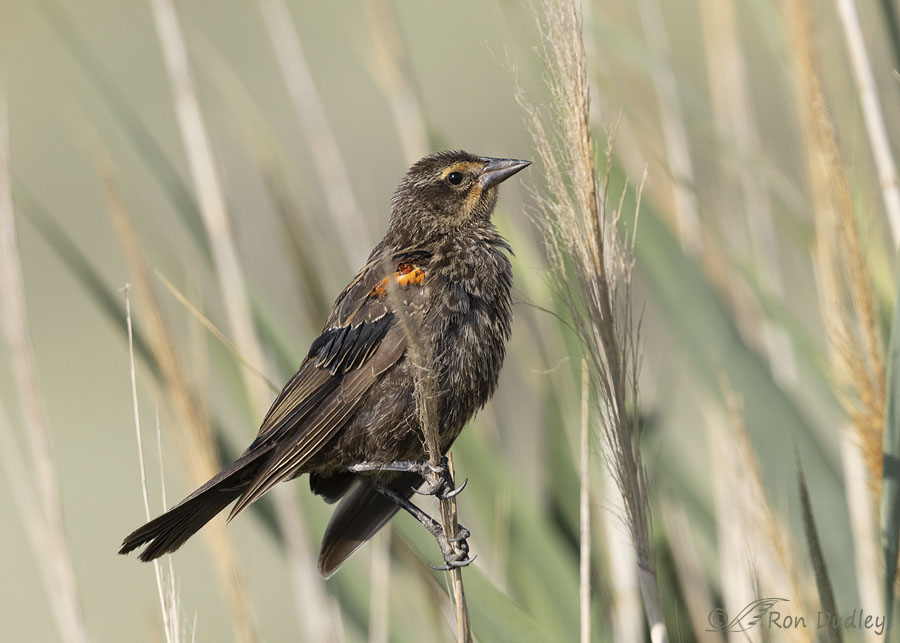
A female Red-winged Blackbird that was in a mixed flock of Red-winged and Yellow-headed Blackbirds. I don’t think females of this species get the attention they deserve.
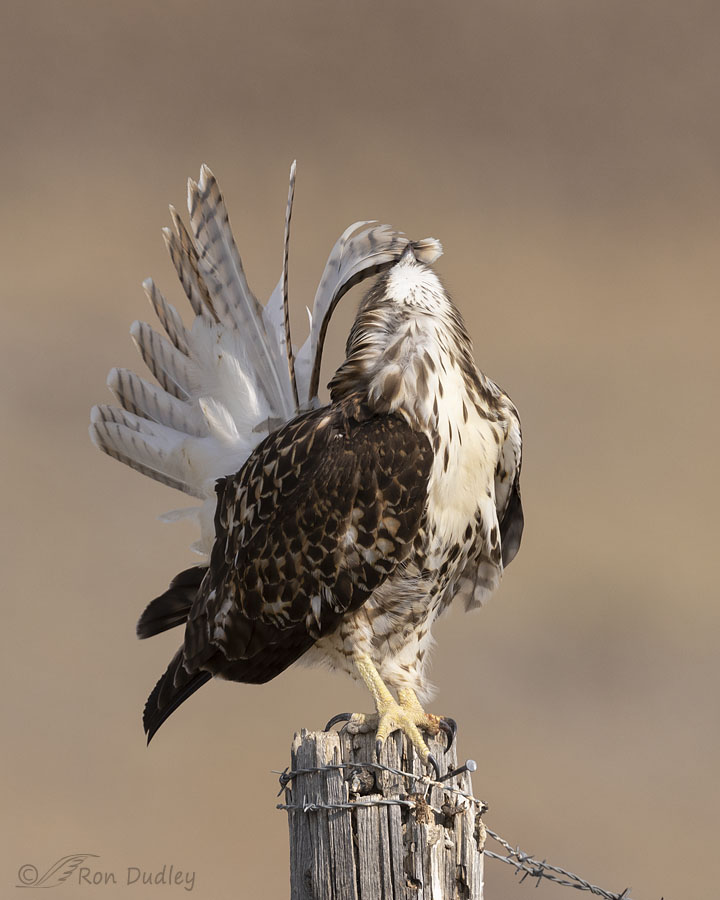
An immature Red-tailed Hawk taking care of business. In this case the business was preening its tail feathers. I rarely like bird photos where the face and eye can’t be seen but for this pose I’ll make an exception.
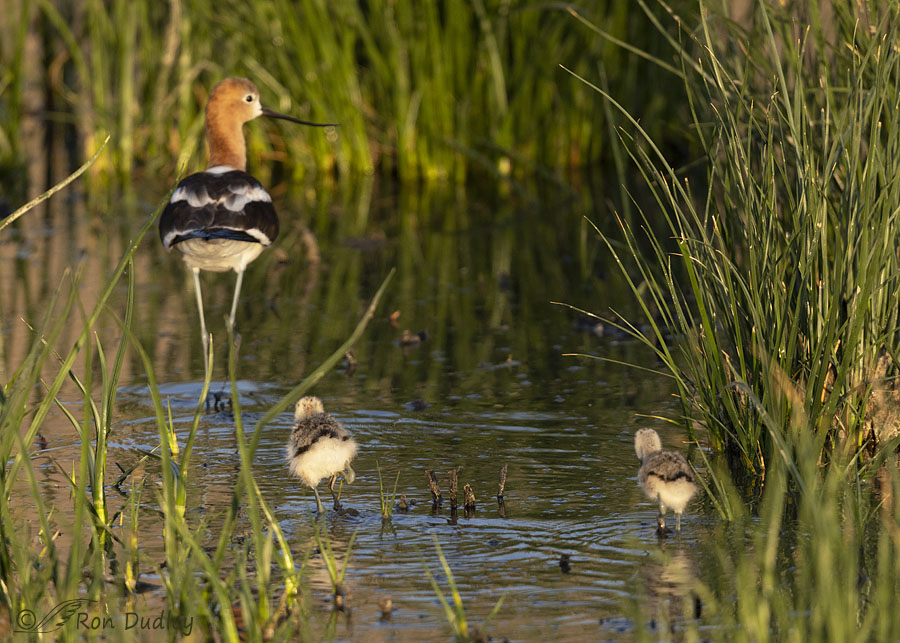
A triple butt-shot of an adult American Avocet with two chicks. This photo was taken on July 25th, which I thought was pretty late in the season for chicks this age and for the adult to still have its cinnamon head and neck. Usually by then the head and neck of adults have at least begun to turn grayish-white.
Which made me wonder if the timing of that color change might be hormonally tied to the actual stage of reproduction rather than to the time of year.
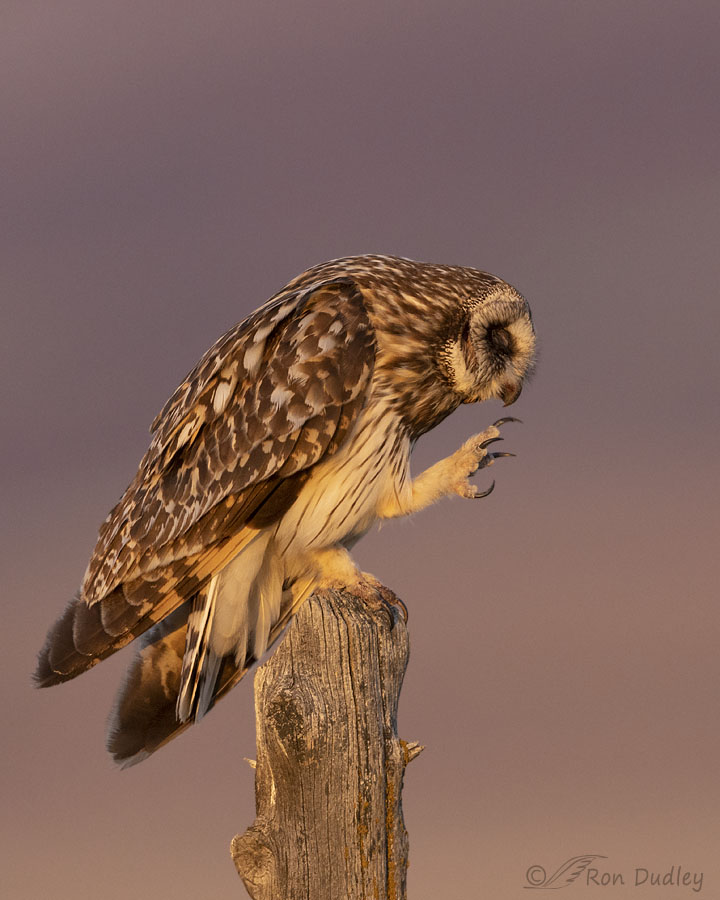
A presumed male Short-eared Owl scratching his face in very warm morning light. In this photo we swap a look at his eye for a very good look at his talons. If I scratched my face with those things I wouldn’t have a face left.
So there you have it, some photos of recent birds that have at least something of interest for aviphiles. If you ask me anyway.
Ron
Notes:
- Sorry, I ran out of time to include image techs.
- Aviphile – a bird lover.


Excellent, loved them!!
I love the bird potpourri posts. Makes for a fun “name that bird” quiz. 🙂
Good. Thanks, Amy.
This could almost be a post titled Bird Yoga. All but one–and even the female Blackbird could be doing a breathing meditation.
Oh, my imagination! LOL
“This could almost be a post titled Bird Yoga”
I see what you mean, Arwen.
LOTS and lots of interest from me.
I am blown away by the wing span of the vulture and, as I have so often said, wish we had them.
And fascinated by the thought that avian colours might be dependent on hormonal issues instead of (as well as?) time of the year.
Lots to ponder about, lots to enjoy. Many, many thanks.
I’m glad you enjoyed them, EC. Thanks.
Very wonderful collection. I love the owl pose and colors and the preening redtail position. This reminds me I still have some of the turkey vulture shots too. I did not finish going over them from the day. There were three there and I was disappointed in focus being sharp on only one bird. I tried for focusing on all three birds by adding more depth of field with a smaller aperture but missed the mark. There are a few that might work. The middle vulture pelleted too.
April, while I was there one of them was trying to throw a pellet but couldn’t get it done.
With respect to color change in avocets: Molt times are highly variable with some individuals not fully changed until early October. There are many factors involved in molt and hormonal changes are one. It takes a lot of energy to grow new feathers and that energy is better spent on nesting during that season. If breeding is late, molting may also be delayed. Avocets molt prior to migration rather than on winter grounds. That’s most important for flight feathers so body feather molts may be more variable. Some avocets may begin to change the head/neck color even while on eggs but most are somewhat later. Birds you see with gray winter heads may actually have bred elsewhere and are now on their journey south. For them, the migration is in stages and not in one long flight.
“If breeding is late, molting may also be delayed.”
That’s what I wondered might be happening here, Dan. Thanks for all that interesting info.
I do like them all—but those red tips on the Cedar Waxwing and the red shoulder patch on the female Red-winged Blackbird are most intriguing. Never have seen either feature so well-defined (if a tad fuzzy in the first case) on either bird, both of which make occasional appearances in my yard. And the Red-tail’s preening position reminds me of a gymnast’s or figure skater’s backward bend/pose. Ouch.
Ouch is right, Chris. My back isn’t happy even without striking that pose. I’d be in the hospital if I attempted it.
None “quite make the grade for a standalone post”. Fine, give them to me and I’ll give each one it’s own. And I’m sure my photographer and birder friends will be blown away. Can’t pick a fave but the flufflebutt family comes close.
I sure wish those flufflebutts had turned around, Lyle. But to be honest, I was so focused on the adult I almost didn’t see them.
The Vulture and the butt shot of the avocets is my favorites of the group.
Good to know, Jo.
All interesting. Like the color contrasts of the blue sky and the lichen covered rock with the Vulture. Really interesting and different Waxwing take-off with the barely showing catch-eye. We have hundreds if not a thousand Red-winged Blackbirds here and I often take photos of the females. I have many photos of them catching insects around marshy areas. I remember a post maybe a few years back when you cracked me up using the word “skulking” describing the females behavior during mating season. Really like the Red-tail preening. Very unusual. Love the very cute Avocet chicks. Have photographed the Avocets many times here, but have never seen chicks. Very special. Like the owl and its talons very much even without the catch-eye. Very nice Sunday morning feathered potpourri.
“I remember a post maybe a few years back when you cracked me up using the word “skulking” describing the females behavior during mating season”
I’m impressed by your memory, Everett. I’d have to research my old posts to refresh that memory.
I forget the situation or when, but I remember responding telling you that the first time I remember hearing the word was in the movie Four Weddings and a Funeral with Hugh Grant etc
Very interesting post this morning–very varied ! The owl appeared to be
giving a benediction to an audience below his post — how’s that for
anthropomorphism……
Thanks, Kris. That’s about the only context where I appreciate a benediction… 🙂
Fun series of birds just going about their “daily business” 🙂 The red tips do show up well in the Waxwing shot.
Interesting possibility on Avocet coloring. Whitetail bambi’s ARE late this year and just starting to lose their spots, particularly the twins.
Female Redwings DO tend to be unremarkable relative to the males and not as big a PITA at the feeders as the males…… 😉
Of course, the hawk and the owl ALWAYS get my attention…. 🙂
Judy, DWR estimates that we have over 300,000 Mule Deer but only about 1000 Whitetails so I never see Whitetails here. I’m always surprised when I see Whitetails in Montana when I shouldn’t be.
I wish! Whitetails are hell on the yard and garden whereas the Mule Deer only come in for apples in the fall or if they’re starving…… 😉
Love, love, love this type of post with the odd, unusual, and provocative. I have never seen the red tips before but will now always look for them. The question about colour change being tied to hormones instead of seasonal changes like light was brilliant, provocative and will hopefully lead to some good research. And then the other three which were delights in their own way.
Thanks very much, Granny Pat. I suspect “they” already know what triggers the color change in avocets – it’s just that I don’t…